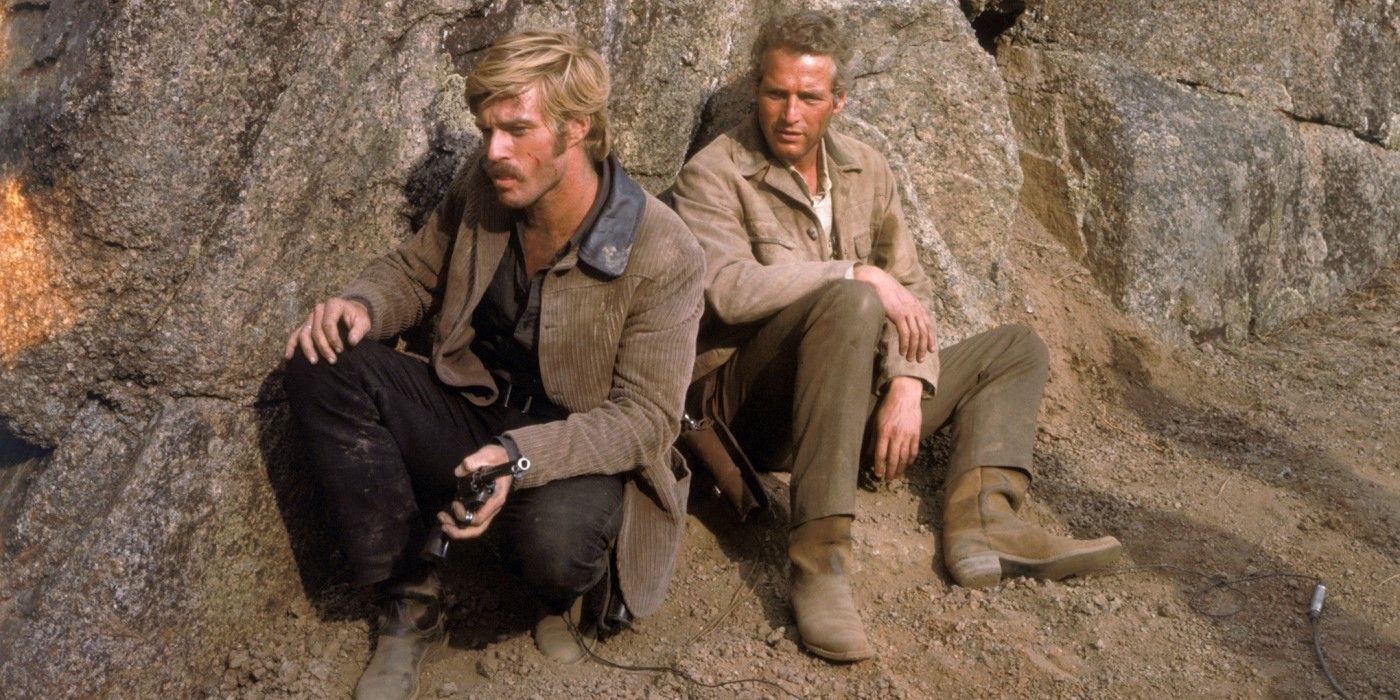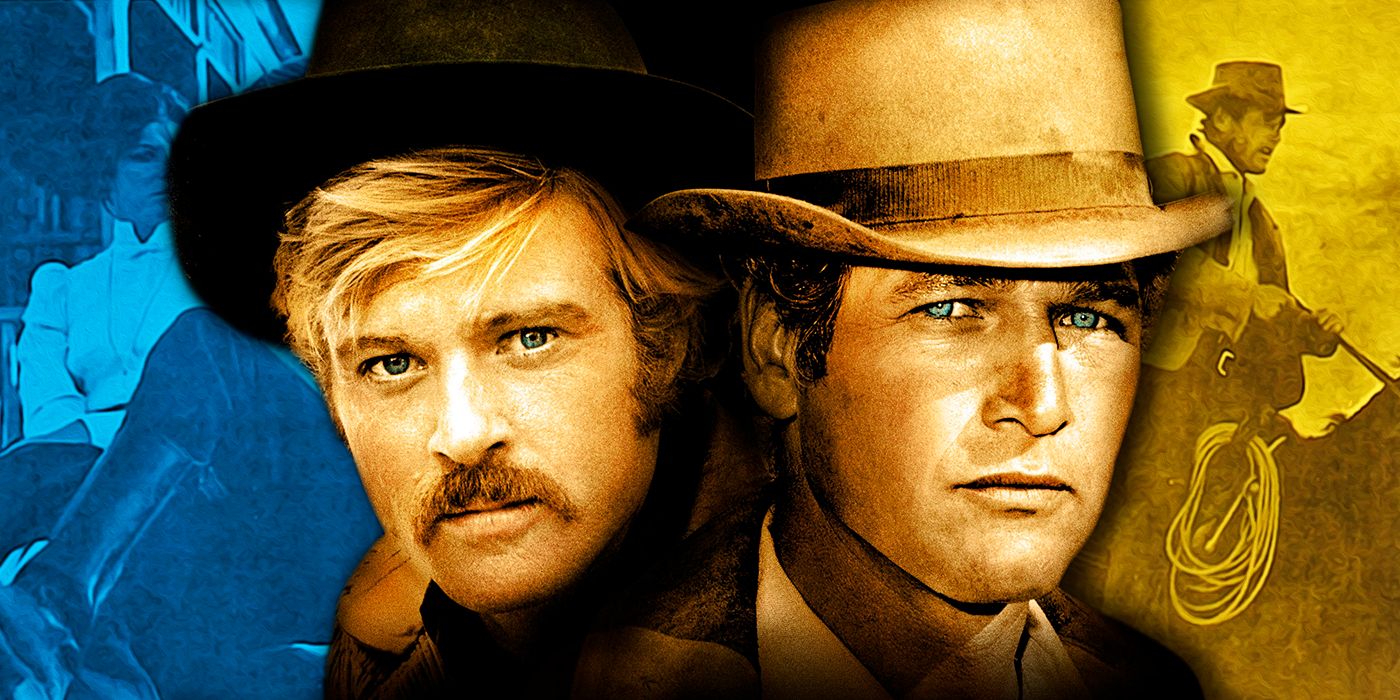
With seven Academy Award nominations and four wins – including Best Screenplay – Butch Cassidy and the Sundance Kid is a timeless film. Directed by George Roy Hill and starring Robert Redford and Paul Newman at the height of their careers, it’s still considered a landmark achievement in cinema. The screenplay was penned by William Goldman, who later won another Oscar for All the President’s Men in 1977. The film tells the story of real outlaws Harry Longabaugh, known as The Sundance Kid, and his partner, Butch Cassidy, whose real name was Robert LeRoy Parker. But the historical basis of the characters isn’t the main reason why people still enjoy this classic Western.
Butch Cassidy and the Sundance Kid is a funny road movie about two unlikely friends who are just going along for the ride. Back in 1969, Robert Redford hadn’t yet become the acclaimed director we know today, and was still years away from starting the Sundance Film Festival. Paul Newman, however, was already a famous actor, known for his role in The Hustler as Fast Eddie Felson. But it was Butch Cassidy that truly established him as an iconic star.
This Redford Newman Team-Up is Irresistible
The incredible talent of Paul Newman and Robert Redford is clear for everyone to see. As Butch Cassidy and the Sundance Kid, they created a standard for Western films that no movie has surpassed. Before taking on this Western, Newman had recently completed Winning alongside his wife, Joanne Woodward, and Redford was coming off of Barefoot in the Park with Jane Fonda. However, this project significantly boosted Redford’s career, while solidifying Newman’s status as a legendary actor. What’s particularly noteworthy about Butch Cassidy, despite featuring two prominent leads competing for attention, is the complete lack of any rivalry between them.
Throughout the film, the actors’ performances work really well together, and given how simple the story is, their chemistry easily keeps viewers engaged. Director George Roy Hill cleverly maintains a lighthearted tone, despite the fact that the two main characters are constantly in danger. In terms of character development, there isn’t much difference between them, except that Butch is portrayed as a ladies’ man, whereas Sundance is more discerning. This ideal casting choice is a rare find, bringing together two true legends of the screen at their very best. The witty back-and-forth dialogue, full of sarcastic remarks, and their combined star power are what truly make the movie successful.
Butch Cassidy and the Sundance Kid can also be seen as groundbreaking because of how it portrays Etta Place, played by Katherine Ross, with genuine respect and without gender bias. Ross is famously known for her role as Elaine in The Graduate, and her character in Butch Cassidy receives a level of consideration rarely seen in other Western films. The connection between the characters demonstrates an early instance of gender equality, showing that Butch Cassidy was remarkably progressive for its time in how it represented women.
In Butch Cassidy, she acts as the link between the two main characters, sharing a special bond with each of them. In a film filled with masculine energy, Etta brings a sense of peace and balance, giving these flawed heroes more complexity and allowing both Newman and Redford to demonstrate their star power without a traditional romantic storyline to pull focus. But this iconic Western offers more than just three strong lead performances and a clever script. It also features memorable supporting characters who provide both humor and heartfelt emotion.
While George Furth may not be well-known to moviegoers, his role as Woodcock in Butch Cassidy is incredibly important. Woodcock is a man of strong morals who refuses to leave his job protecting the money, and he actually challenges Butch Cassidy on several occasions. The witty conversation between Furth and Newman is delightful, showing a softer side to Butch and his kindness even towards those who oppose him. This is especially clear during their second meeting, where Butch shows reluctant respect because Woodcock is still recovering from their previous encounter. These scenes may seem small, but they reveal a surprising depth within these outlaws that you might otherwise miss.
Sheriff Bledsoe, portrayed by Jeff Corey, delivers a memorable line, stating to Butch and Sundance what the audience already understands: they can’t escape the consequences of their actions, only decide where they’ll face them. This moment of gravity appears in a film largely defined by its uplifting spirit and the compelling performances of its cast. It’s a brief, sobering pause brought to us with stunning visuals thanks to the work of cinematographer Conrad L. Hall, who masterfully brings this world to life in vibrant color.
10 Best acting performances in westerns, ranked – RL
Butch Cassidy is Rife with Anti-American Sentiment
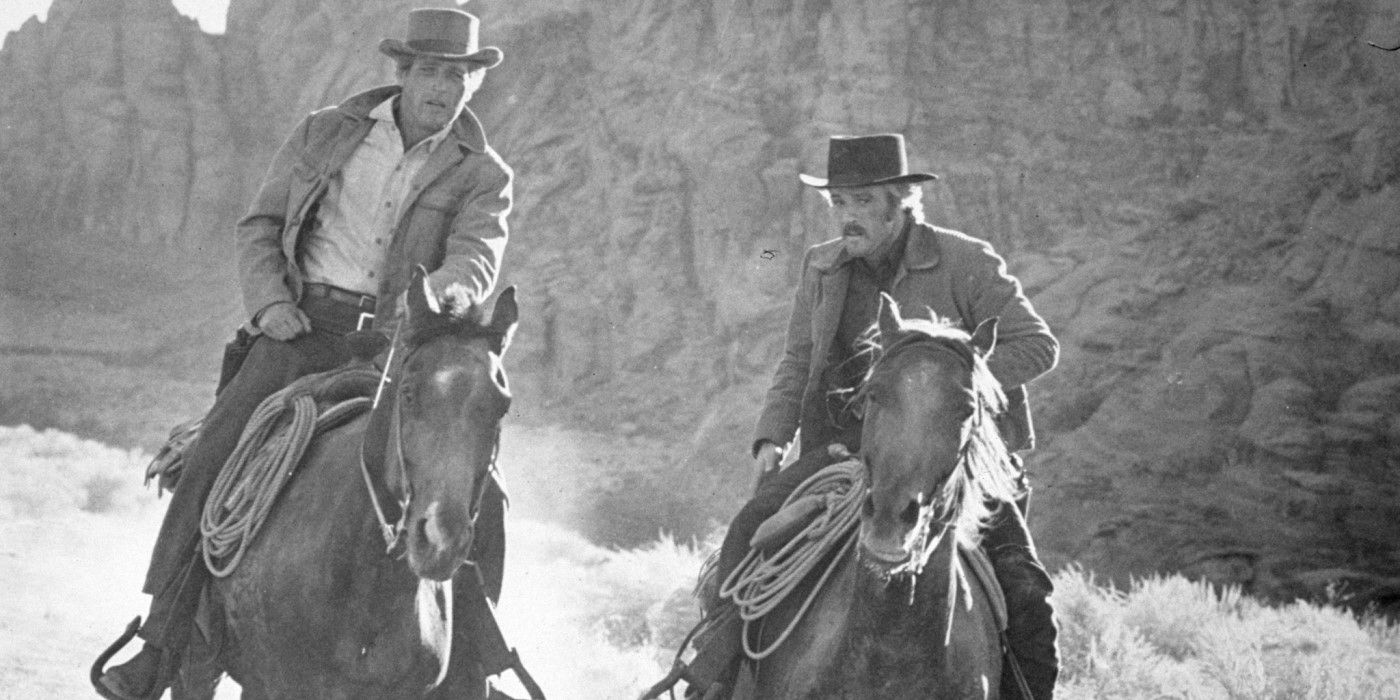
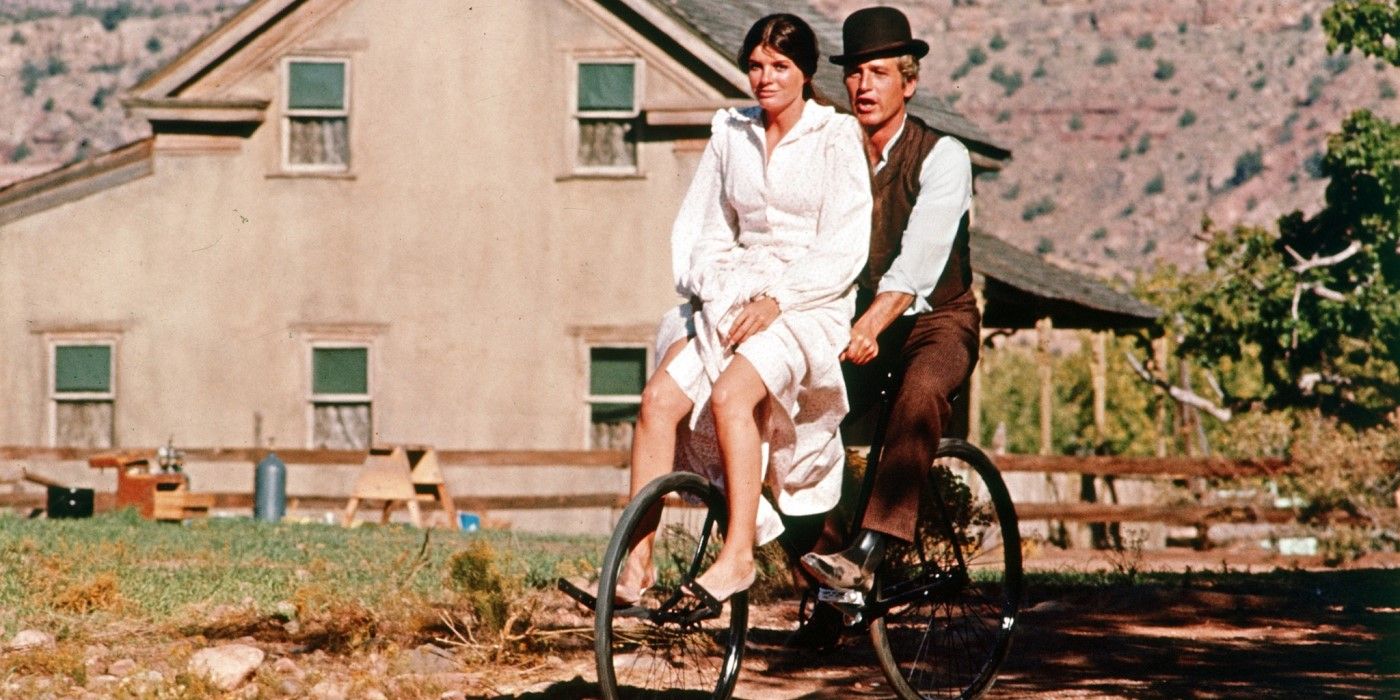
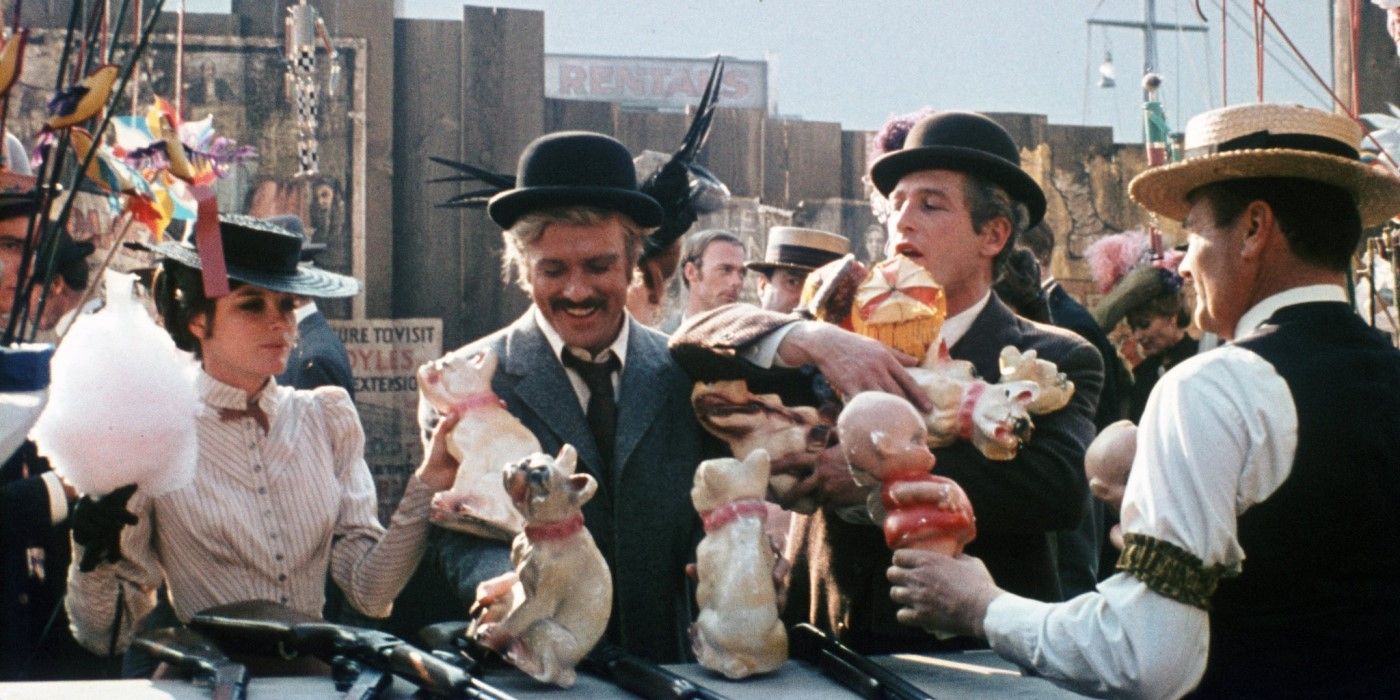
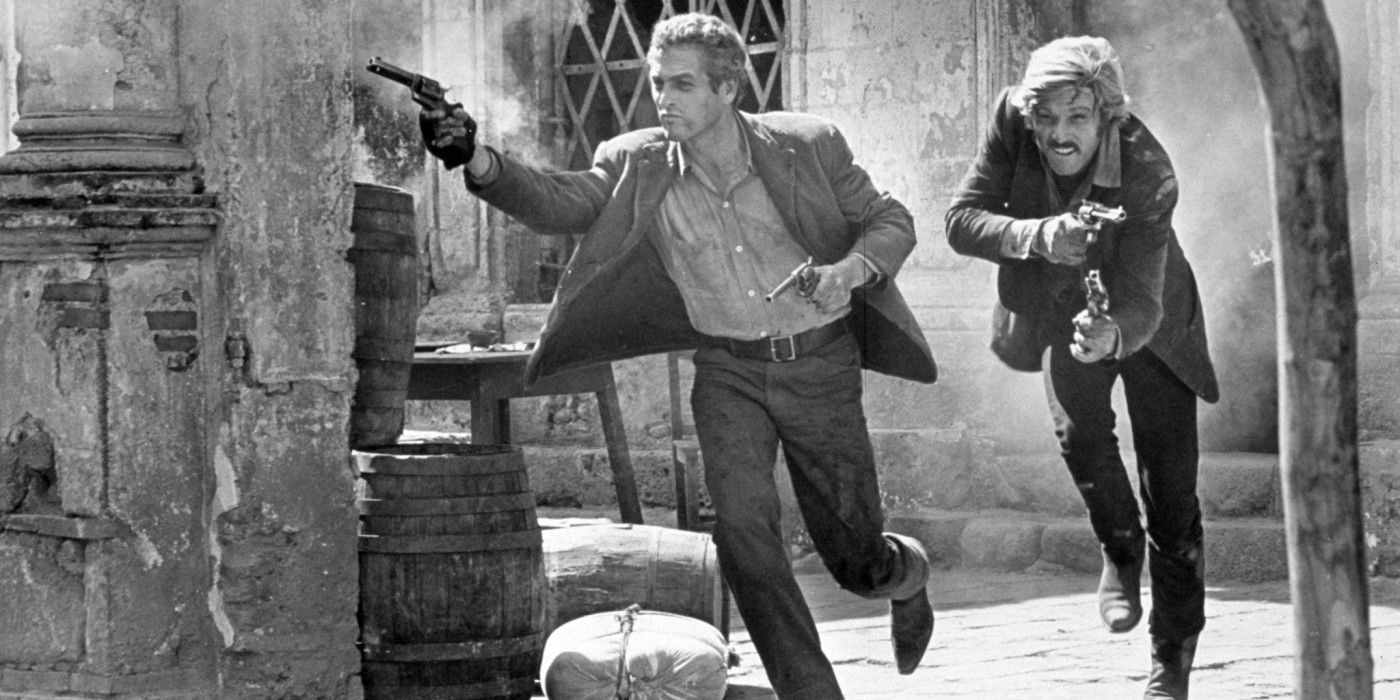
Conrad L. Hall received an Academy Award for his cinematography in Butch Cassidy and the Sundance Kid. It’s likely no accident that he won another Oscar for his work on Road to Perdition, which also happened to be Paul Newman’s last starring role. Few Westerns evoke a sense of longing for the past as effectively as Butch Cassidy. The film uses old newsreel footage to provide background information, introducing the notorious gang. The breathtaking scenery is beautifully captured throughout the constant chase of Butch and Sundance, playing on classic Western themes as they try to escape the group pursuing them. The mountains are dry and desolate, and the sunlight glinting off the vast plains adds a touch of romance to their story.
He’s often overlooked, but he’s a key reason Butch Cassidy and the Sundance Kid is so memorable, skillfully changing the film’s colors between brown tones and black and white to create lasting images of the two main characters. By framing them with visuals reminiscent of the time period, Hall encourages viewers to connect with their story and the romantic ideals woven into the script. The film’s visuals are incredibly valuable on their own, and when paired with Burt Bacharach’s music, Butch Cassidy becomes truly exceptional. The song “Raindrops Keep Falling on My Head” doesn’t just create a cheerful mood that contrasts with the characters’ circumstances; it also subtly diverts attention from the film’s deeper social messages, which were included by the screenwriter.
It’s important to remember that the Vietnam War was a major focus in America when Butch Cassidy came out. While the connections aren’t obvious, the film contains symbolic elements worth considering. 1969 also saw the beginning of the decline of the hippie movement, coinciding with the emergence of new directors like Steven Spielberg, George Lucas, and Francis Ford Coppola from film school. These filmmakers would come to represent a change in cinema, moving power away from the studios and toward the director-a similar shift is happening today with films like Bong Joon Ho’s Mickey 17. The influential counter-culture film Easy Rider also debuted in 1969, a time when protests against the Vietnam War dominated the headlines. A sense of change was in the air, and that began to appear in Westerns that addressed social issues.
Butch Cassidy and the Sundance Kid tells the story of two men facing a dwindling future, existing as outsiders, and failing to realize how outdated they’ve become. The Old West setting can be seen as a symbol of old-fashioned ideas in a world that’s rapidly changing. The group pursuing Butch and Sundance represents the unstoppable march of progress that will ultimately overtake them-something they can’t escape because they’re unable to adapt. The pursuers, who are identified by name but remain silent, take on an almost legendary presence.
This Timeless Western is Still Packed with Purpose
Right from the start, Butch Cassidy and the Sundance Kid playfully misleads viewers. It gives the impression of a road movie, but doesn’t really have a beginning or end – it simply continues until the outlaws are trapped. It also resembles a buddy movie, though the bond between the two men is forged through challenges, rather than shared history or common interests. There’s an imbalance of power too, with Butch depending on Sundance, who is more agile and a faster draw. Their conversations are sharp and witty, and Sundance often points out their age difference with sarcastic remarks, which adds a modern feel to the film.
In a world currently filled with A Minecraft Movie and reboots of familiar stories, Butch Cassidy serves as a reminder that films can be meaningful. They can highlight societal issues, tackle political themes, and encourage thought without being overly preachy. Today, more so than ever, studios are trying to determine what audiences want, but they often lack the courage to take risks with original ideas. Butch Cassidy offers a glimpse into a past era, and feels connected to , a film where the main character also grapples with feeling outdated as his career declines, leading him to Italy to direct low-budget Westerns. It’s simply a coincidence that this Quentin Tarantino film also touches on similar ideas as Butch Cassidy, but it’s worth mentioning when considering the film’s impact.
It’s widely accepted that Robert Redford and Paul Newman would become legendary figures no matter what, with Redford later winning a directing Oscar for Ordinary People in 1980, and Newman receiving an acting Oscar for The Color of Money in 1987. But for a lot of viewers, this Western really boosted their recognition in Hollywood. This shouldn’t be forgotten even after over 50 years, and their incredible on-screen connection is still unmatched.
Butch Cassidy and the Sundance Kid is available on Blu-ray, DVD and digital download.
Read More
- Mobile Legends: Bang Bang (MLBB) Sora Guide: Best Build, Emblem and Gameplay Tips
- Brawl Stars December 2025 Brawl Talk: Two New Brawlers, Buffie, Vault, New Skins, Game Modes, and more
- Clash Royale Best Boss Bandit Champion decks
- Best Hero Card Decks in Clash Royale
- Call of Duty Mobile: DMZ Recon Guide: Overview, How to Play, Progression, and more
- Clash Royale December 2025: Events, Challenges, Tournaments, and Rewards
- Best Arena 9 Decks in Clast Royale
- Clash Royale Best Arena 14 Decks
- Clash Royale Witch Evolution best decks guide
- Brawl Stars December 2025 Brawl Talk: Two New Brawlers, Buffie, Vault, New Skins, Game Modes, and more
2025-09-29 23:38
